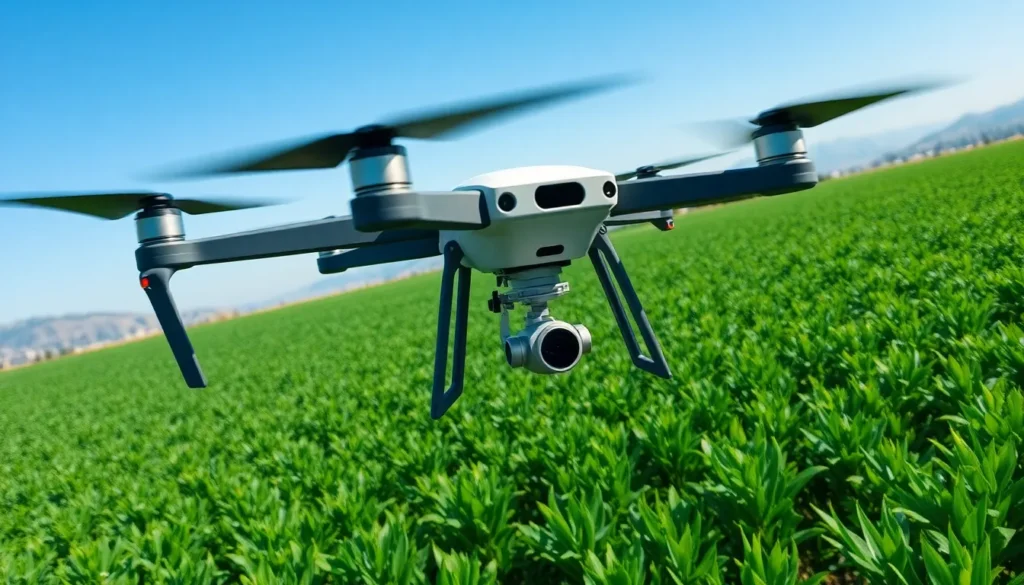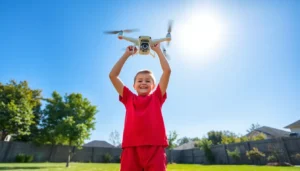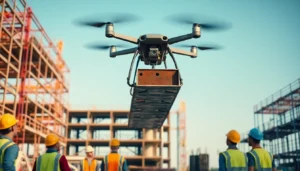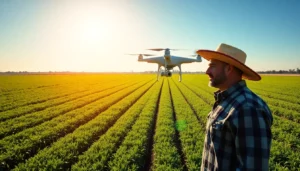Table of Contents
ToggleDrones are no longer just the toys of tech enthusiasts; they’ve evolved into sophisticated flying machines equipped with artificial intelligence. Imagine a world where drones can navigate complex environments, make decisions on the fly, and even avoid obstacles like a pro. It’s like giving a bird a brain—only this bird can deliver your pizza, monitor crops, or even help in search and rescue missions.
With AI at the helm, these flying marvels are transforming industries and redefining what’s possible. They’re not just buzzing around aimlessly; they’re smart, efficient, and ready to take on tasks that would baffle even the most seasoned human operators. So buckle up and prepare for a journey into the sky where technology meets creativity, and drones are the new superheroes of the air.
Overview of Drones With Artificial Intelligence
Drones equipped with artificial intelligence exhibit advanced capabilities that significantly enhance their functionality. These flying machines utilize AI algorithms for tasks like autonomous navigation, obstacle detection, and data analysis. Multifunctional drones perform effectively in various scenarios, including food delivery, agricultural monitoring, and emergency response.
AI allows drones to process data from sensors and cameras in real-time. This capability helps them make informed decisions while executing tasks in complex environments. For instance, drones can monitor crop health by analyzing images and providing actionable insights to farmers, improving yield quality.
Industry leaders employ AI-powered drones for search and rescue operations. These drones navigate treacherous terrains efficiently, locating missing persons and delivering essential supplies. Organizations expand the use of drones in logistics, such as Amazon’s delivery services, showcasing the growing demand for automation in transportation.
Moreover, drones with AI facilitate urban planning and infrastructure inspection. They collect data to identify maintenance needs, optimizing resources and minimizing downtime. In addition, autonomous drones enhance security measures by continuously monitoring areas and detecting potential threats.
Increasingly, developers focus on improving the intelligence of drone technology. They integrate advanced machine learning techniques, enabling drones to learn from experiences and adapt to changing environments. By employing AI, drones can operate more safely and effectively, illustrating their potential in various sectors.
The adoption of AI in drones is transforming industries rapidly. Future advancements promise to make drones even more capable, paving the way for innovative applications and increased efficiency.
Key Features of Drones With Artificial Intelligence
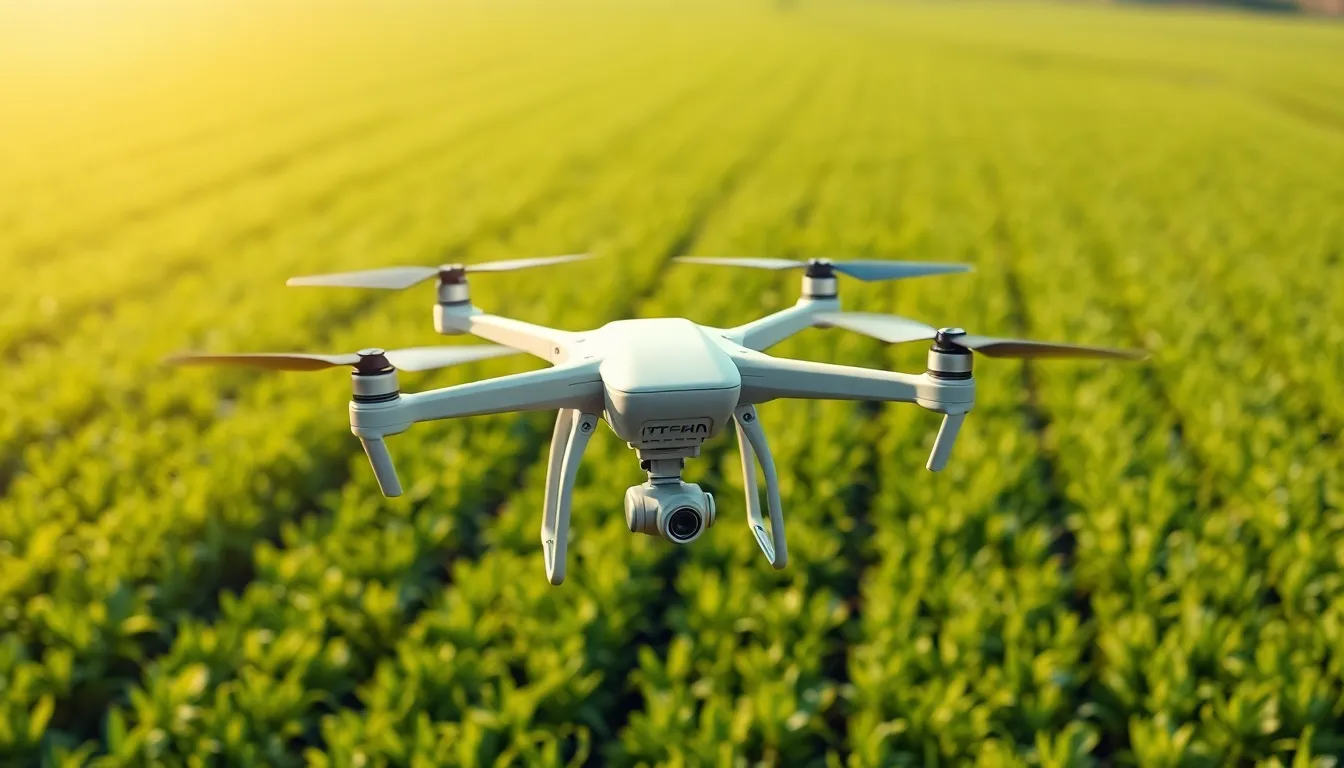
Drones equipped with artificial intelligence offer numerous advanced features that enhance their operational efficiency. Two standout capabilities are enhanced navigation and real-time data processing.
Enhanced Navigation Capabilities
Enhanced navigation capabilities define the performance of AI-powered drones. These drones employ sophisticated algorithms to interpret sensory data, allowing for navigation in complex environments. They recognize obstacles and adjust flight paths autonomously, ensuring safety during operation. For instance, some drones utilize GPS satellites alongside onboard sensors to create precise maps of their surroundings, improving accuracy. Drones equipped with advanced navigation can adapt to varying terrains, facilitating functions like search and rescue in dense forests or urban areas.
Real-Time Data Processing
Real-time data processing significantly boosts the effectiveness of drones with artificial intelligence. Such drones analyze data from cameras and sensors instantly, enabling immediate decision-making. This capability supports applications like agricultural monitoring, where drones assess crop conditions and provide feedback to farmers quickly. As an example, drones can identify areas needing irrigation by analyzing soil moisture levels in real time. Furthermore, this processing capability enhances inspection tasks, allowing for swift detection of infrastructure issues that require maintenance, thus minimizing potential hazards.
Applications of Drones With Artificial Intelligence
Drones with artificial intelligence exhibit diverse applications across multiple sectors. Their capabilities are revolutionizing how tasks are performed.
Agriculture
Agricultural practices benefit significantly from AI-equipped drones. Crop monitoring and health analysis occur with enhanced efficiency. Drones capture high-resolution imagery and analyze data to offer actionable insights to farmers. Adoption of this technology improves yield prediction and pest management. Growers leverage these capabilities to optimize resource usage like water and fertilizers, ultimately driving sustainability in farming.
Surveillance and Security
Surveillance and security operations utilize drones with AI for enhanced effectiveness. These drones conduct real-time monitoring of large areas, ensuring rapid detection of security threats. Equipped with facial recognition and anomaly detection algorithms, they assist law enforcement and private security companies in maintaining safety. Constant vigilance through aerial monitoring minimizes risks in urban environments. Furthermore, integration of these drones streamlines data collection for incident analysis and response planning.
Delivery Services
Delivery services thrive on the efficiency of AI-enabled drones. Companies are increasingly utilizing these drones for fast package delivery, transforming logistics. Autonomous navigation allows them to avoid obstacles and adapt to changing environments. Numerous businesses, including major retailers, implement drones for last-mile deliveries. Speedy transport enhances customer satisfaction and establishes competitive advantages in the marketplace.
Challenges and Limitations
Drones with artificial intelligence face significant challenges and limitations that impact their wide-scale adoption. Understanding these constraints is essential for addressing potential hurdles.
Regulatory Issues
Regulations governing drone operations present a major obstacle. Various countries establish strict guidelines that dictate where and how drones can fly. Compliance with air traffic control systems is vital for safe airspace integration. Specific requirements exist around drone weight and operational altitude, affecting capabilities for various applications. Coordination with local authorities often complicates deployment, retraining existing pilots and ensuring safety standards. Ensuring responsible usage also plays a critical role in mitigating risks associated with autonomous flight.
Ethical Considerations
Ethical dilemmas surround the use of AI in drones. Privacy concerns arise as surveillance capabilities enhance, leading to potential misuse of collected data. Surveillance without consent prompts debate over individual rights versus security needs. Accountability issues also emerge, especially concerning decision-making in critical scenarios. Assigning responsibility for accidents involving AI directs attention toward guidelines for ethical functionality. Balancing innovation with ethical limitations remains a significant challenge as technology advances.
Future Trends in Drones With Artificial Intelligence
Emerging advancements continue to shape the future of drones with artificial intelligence. Companies explore enhanced autonomy, enabling drones to operate without human intervention. Machine learning integration allows these drones to analyze environments and adapt quickly to dynamic conditions.
Innovative uses for AI-enabled drones appear across diverse sectors. In agriculture, farmers leverage drones for precision farming, improving yields while conserving resources. The medical field benefits too, as drones transport essential supplies to remote locations, enhancing emergency response capabilities.
Autonomous delivery systems are on the rise, with companies implementing drones to facilitate last-mile deliveries. Increased efficiency benefits businesses, reducing costs while enhancing customer satisfaction. Public safety initiatives rely on drones for surveillance, offering real-time monitoring and rapid response capabilities.
Integrated AI systems improve obstacle detection, minimizing collision risks. Enhanced data processing speeds allow drones to provide actionable insights promptly. Industries also benefit from improved battery technologies, extending flight times and increasing operational range.
Regulatory landscapes evolve alongside technologies, as governments develop frameworks for safe drone operation. New policies may support increased integration into air traffic management, promoting the harmonious coexistence of drones and manned aircraft. Enhanced focus on security protocols addresses concerns regarding data privacy and ethical considerations.
As industries embrace drones equipped with AI, challenges remain. Developers must tackle compliance with regulations while innovating simultaneously. Balancing progress with responsible usage ensures drones contribute positively to society, paving the way for a future where AI-powered drones transform daily life.
The integration of artificial intelligence into drone technology is revolutionizing various industries. As these intelligent machines become more capable, their applications are expanding rapidly. From enhancing agricultural practices to transforming logistics and improving safety in urban environments, AI-equipped drones are proving to be invaluable assets.
While challenges such as regulatory hurdles and ethical considerations remain, the potential for innovation is immense. Developers are continuously pushing the boundaries of what drones can achieve. As advancements in AI continue to unfold, the future promises even greater possibilities for these flying machines. Embracing this technology responsibly will be key to maximizing its benefits for society.

